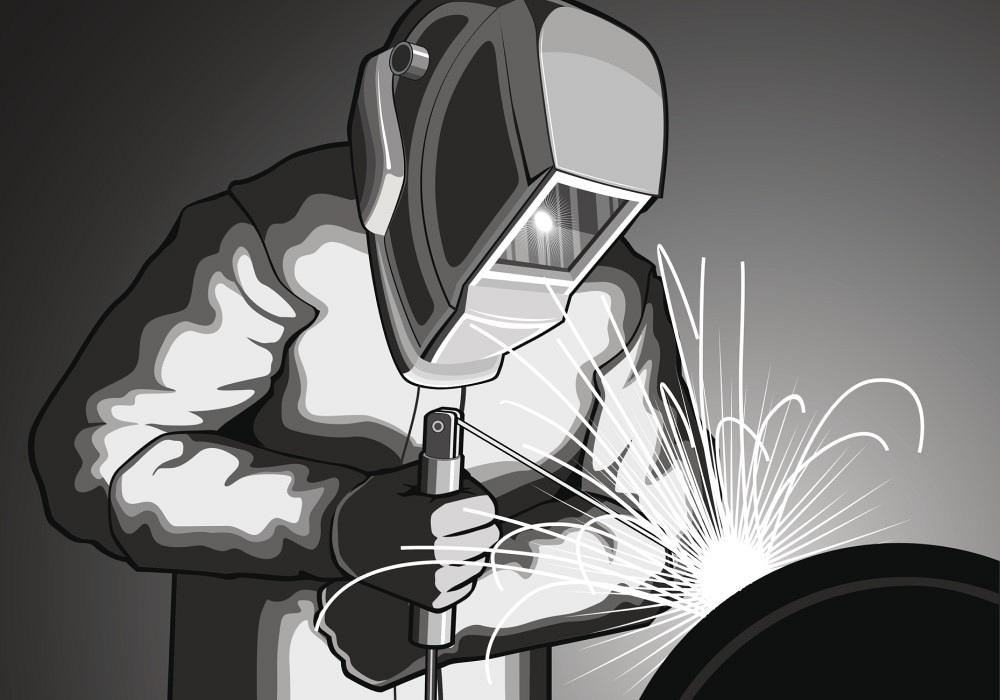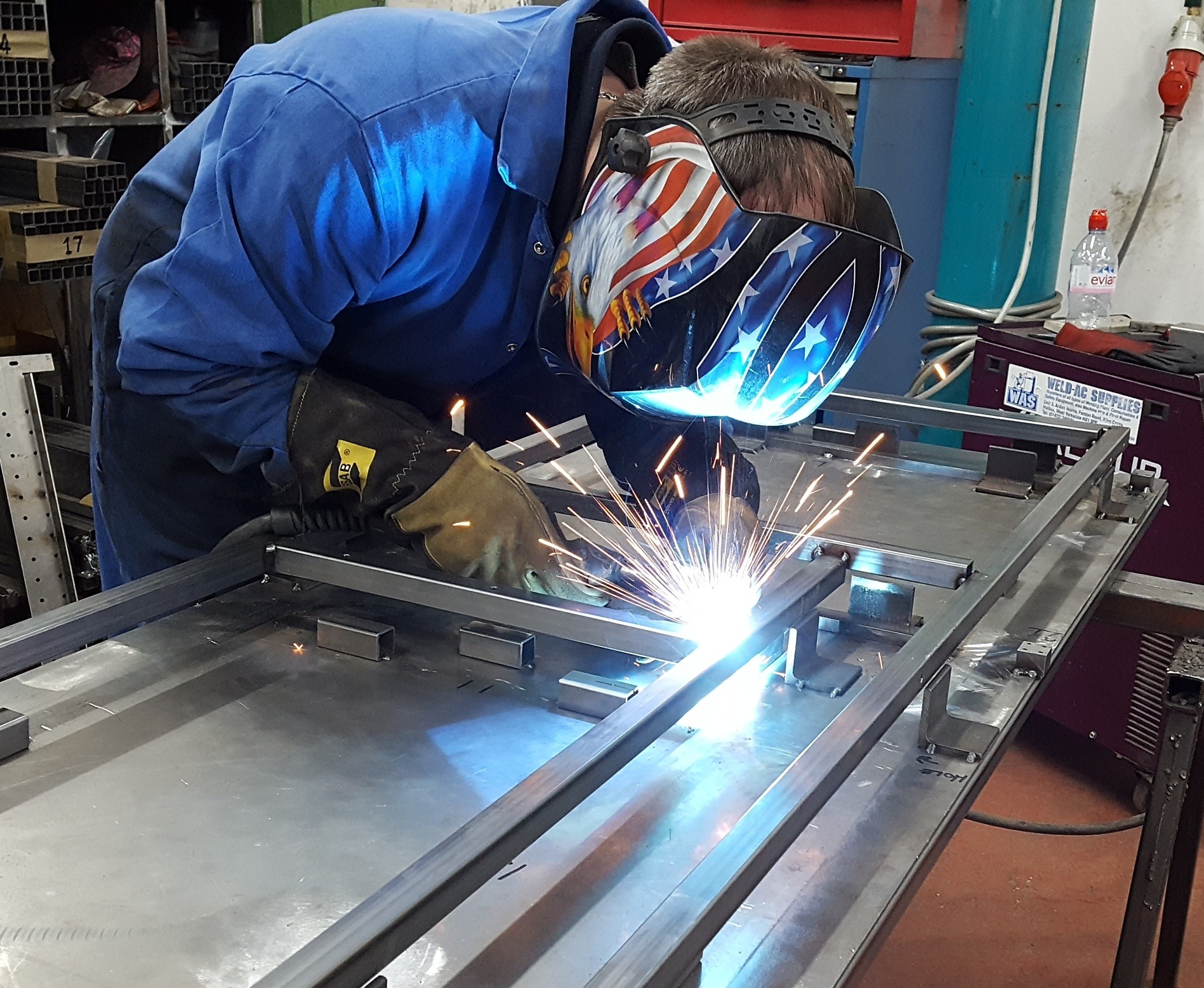Common Welding Repair Service Issues and How to Address Them Properly
Welding repair services frequently encounter a variety of issues that can endanger the integrity of the final product. Typical issues include insufficient infiltration, porosity, and imbalance, among others. Each flaw offers unique difficulties that call for particular approaches for resolution. Recognizing these problems is vital for welders intending to enhance their abilities and outcomes. This conversation will certainly discover these common welding repair problems and efficient approaches to address them.
Insufficient Penetration
Poor penetration happens when the weld steel fails to fully fuse with the base material, causing weak joints and potential structural failures. This concern often comes from insufficient warm input, wrong electrode angle, or incorrect welding speed. Welders may come across insufficient penetration due to a miscalculation of the required criteria for a particular material density or type. Furthermore, contamination on the base product's surface can impede effective bonding, intensifying the problem. To attend to inadequate penetration, welders should guarantee ideal settings on their devices and maintain a clean work surface. Regular examination of welds is suggested to determine any kind of deficiencies early, enabling prompt modifications and the prevention of compromised architectural stability in welded settings up.
Porosity
Porosity is an usual issue in bonded joints that shows up as little gas bubbles caught within the weld metal. This problem can compromise the stability of the weld, leading to lowered toughness and potential failing under anxiety. Montana Mobile Welding and Repair Fabrication. Porosity generally occurs from contamination, wetness, or improper welding strategies, which allow gases to escape right into the molten weld swimming pool. To deal with porosity, welders should ensure appropriate surface preparation, maintain a clean functioning environment, and use suitable welding specifications. In addition, selecting the right filler product and shielding gas can alleviate gas entrapment. Regular examination and testing of welds can help determine porosity early, guaranteeing timely restorative actions are taken, therefore preserving the quality and integrity of the bonded framework
Misalignment
Misalignment in welding can occur from different elements, including incorrect arrangement and thermal growth. Comprehending the origin causes is essential for reliable resolution. Several improvement techniques are readily available to realign elements and guarantee structural stability.
Reasons for Misalignment
Welding imbalance frequently stems from a range of underlying issues that can endanger structural stability. One key cause is incorrect fit-up of components prior to welding, which can cause spaces and uneven surfaces. Variants in thermal expansion throughout the welding process can likewise result in distortion, particularly if the materials being joined have various coefficients of development. In addition, insufficient securing and fixturing may fall short to hold parts securely in position, bring about movement throughout welding. Badly conserved devices, including welding machines and devices, may present inconsistencies in the weld grain, further adding to misalignment. Driver error, stemming from not enough training or experience, can additionally play a significant duty in producing misaligned welds.

Adjustment Strategies Offered
Dealing with imbalance properly requires a combination of restorative methods tailored to the particular concerns at hand. One common method is making use of jigs or components to hold parts in the correct placement during welding, guaranteeing consistent alignment. Additionally, pre-heating the products can help in reducing distortion and boost fit-up. For significant imbalance, mechanical realignment methods, such as making use of hydraulic jacks or clamps, can be utilized to correct the placement prior to welding. Post-weld warmth treatment may also be necessary to alleviate tensions triggered by misalignment. Mindful examination and modification throughout the configuration stage can stop imbalance issues from ending up being substantial issues, advertising a smoother welding procedure and enhancing total structural honesty.
Distortion
Distortion is a common obstacle in welding that can emerge from various aspects, consisting of irregular heating & cooling. Understanding the reasons for distortion is vital for applying reliable avoidance strategies. Addressing this issue not just improves architectural stability yet likewise improves the overall high quality of the weld.
Sources of Distortion
When based on the extreme warmth of welding, products frequently undergo modifications that can bring about distortion. This phenomenon primarily arises from thermal development and tightening during the welding procedure. As the weld area heats up, the material expands; upon air conditioning, it gets, which can develop internal stresses. On top of that, unequal home heating across a work surface can worsen these tensions, causing warping or bending. The kind of product additionally plays a significant duty; metals with differing thermal conductivity and coefficients of growth may react in a different way, causing uncertain distortions. In addition, poor joint design and insufficient fixturing can add to imbalance during welding, boosting the likelihood of distortion. Understanding these reasons is important for efficient welding repair service and prevention methods.
Avoidance Techniques
Efficient prevention methods for distortion throughout welding focus on controlling heat input and ensuring appropriate joint design. Maintaining a consistent heat input aids to reduce thermal expansion and contraction, which can bring about distortion. Utilizing methods such as pre-heating the workpiece can also lower the temperature gradient, advertising uniform heating. get more info Additionally, selecting proper joint styles, such as T-joints or lap joints, can enhance stability and minimize tension concentrations. Executing correct fixturing to secure the work surfaces in position additionally aids in maintaining placement throughout the welding procedure. Staggered welding sequences can disperse warm extra uniformly, preventing localized distortion. By using these techniques, welders can substantially reduce the chance of distortion and improve the overall quality of their welds.
Fracturing
Breaking is an usual problem experienced in welding fixings, often arising from different aspects such as improper cooling prices, product selection, or insufficient joint preparation. The occurrence of fractures can substantially compromise the stability of the weld, bring about potential failures during procedure. To resolve this problem, welders need to first examine the root creates, making sure that materials are compatible and properly picked for the details application. Additionally, managing the cooling price during the welding process is vital; quick cooling can generate stress and bring about fracturing. Appropriate joint layout and prep work additionally add to minimizing the threat. Carrying out these approaches can enhance weld high quality and sturdiness, eventually minimizing the likelihood of breaking in completed weldments.

Incomplete Blend
A substantial concern in welding fixings is insufficient fusion, which happens when the weld steel does not effectively bond with the base material or previous weld passes - Montana Mobile Welding and Repair Fabrication. This problem can lead to weaknesses in the joint, potentially jeopardizing the stability of the welded framework. Factors adding to insufficient combination consist of insufficient heat input, inappropriate welding method, and contamination of the surfaces being signed up with. To resolve this problem effectively, welders ought to ensure correct pre-weld cleansing and surface prep work, as well as readjust their welding specifications to accomplish adequate penetration and fusion. Normal assessment during the welding process can also help recognize insufficient blend early, permitting timely corrective procedures to enhance the general high quality of the weld
Overheating
While welding fixings can improve structural stability, overheating presents a significant difficulty that can lead to material degradation. Too much warm throughout welding can alter the mechanical properties of steels, resulting in lowered strength, increased brittleness, and warping. This sensation is particularly vital in high-stress applications where structural reliability is paramount. Recognizing overheating can include visual examinations for discoloration or distortion, in addition to checking temperature during the welding procedure. To mitigate the risks connected with overheating, welders need to use ideal techniques, such as controlling heat input, changing travel rate, and using appropriate filler products. In addition, executing pre- and post-weld warmth therapies can assist bring back material residential or commercial properties and boost the general quality of the repair service, ensuring lasting performance and safety.
Frequently Asked Inquiries
What Are the Common Indicators of a Welding Issue?

Exactly How Can I Examine My Welds for Top quality?
To test welds for quality, one can use aesthetic inspections, ultrasonic testing, and radiographic techniques. Each technique guarantees architectural stability, determines flaws, and confirms adherence to specified standards, inevitably improving the dependability of the welded joints.
What Safety Preventative Measures Should I Take While Welding?
When welding, one should focus on security by wearing appropriate individual safety tools, making certain correct air flow, safeguarding flammable products away, keeping a clean workspace, and understanding surroundings to avoid injuries and accidents.
Can I Fix a Weld Without Redoing the Entire Joint?
Repairing a weld without redesigning the entire joint is feasible, depending on the damages (Montana Mobile Welding and Repair Belgrade Fabrication). Methods such as grinding, including filler product, or using a welding process can efficiently address details imperfections while protecting the bordering framework
What Tools Are Vital for Efficient Welding Repairs?
Essential tools for reliable welding repair work consist of a welding maker, cable brush, mill, safety gear, clamps, and filler materials. Each tool plays a crucial role in making certain top quality and safety and security during the fixing procedure. Porosity typically emerges from contamination, dampness, or inappropriate welding methods, which enable gases to get away right into the liquified weld swimming pool. Inadequately conserved equipment, consisting of welding devices and tools, might present variances in the weld grain, additional adding to imbalance. When subjected to the intense warmth of welding, materials often undergo adjustments that can lead to distortion. Breaking is a typical problem encountered in welding fixings, frequently resulting from different elements such as inappropriate cooling prices, product option, or inadequate joint preparation. A considerable issue in welding repair services is incomplete fusion, which occurs when the weld steel does not effectively bond with the base material or previous weld passes.